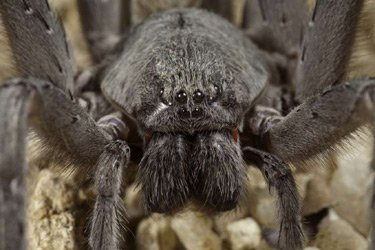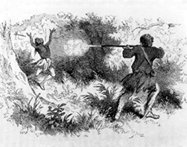
The Antarctic Worm: Eulagisca gigantea. “Judging by the size of the jaws, [it] is a predator, but its diet is unknown, and very little is known about its biology.â€
Scary!
Annelida, Antarctic, Natural History
“An Inordinate Fondness for Beetles”
Fumiko Hirai, Insects, Natural History, Photography
From Fumiko Hirai on Twitter.
The title above is what J. B. S. Haldane (1892-1964) replied to theologians who inquired if there was anything that could be concluded about the Creator from the study of creation.
Wooing Female Bowerbirds
Archbold's Bowerbird, King of Saxony Bird of Paradise, Natural History, New Guinea

Archbold’s Bowerbird (Archboldia papuensis)
From Matt Ridley’s The Red Queen: Sex and the Evolution of Human Nature:
Consider, though, the case of Archbold’s bowerbird, which lives in New Guinea. As in other bowerbirds, the male builds an elaborate bower of twigs and ferns and therein tries to seduce females. The female inspects the bower and mates with the male if she likes the workmanship and the decorations, which are usually objects of one unusual color. What is peculiar about Archbold’s bowerbird is that the best decorations consist of feathers from one particular kind of bird of paradise, known as the King of Saxony. These feathers, which are several times longer than the original owner’s body and stem from just above his eye, are like a car’s antenna sporting dozens of square blue pennants. Because they are molted once a year, do not grow until the bird of paradise is four years old, and are much in demand among local tribesmen, the plumes must be very hard for the bowerbird to acquire. Once acquired they must be guarded against other jealous male bowerbirds anxious to steal them for their own bowers. So, in the words of Jared Diamond, a female bowerbird who finds a male that has decorated his bower with King of Saxony plumes knows “that she has located a dominant male who is terrific at finding or stealing rare objects and defeating would-be thieves.â€
So much for the bowerbird. What about the bird of paradise itself, the rightful owner of the plumes? The fact that he survived long enough to grow plumes, grew longer ones than any other male nearby, and kept them in good condition would be an equally reliable indicator of his genetic quality. But it reminds us of the thing that most puzzled Darwin and got the whole debate started: If the point of the plumes is to indicate his quality, might not the plumes themselves affect his quality? After all, every tribesman in New Guinea is out to get him, and every hawk will find him easier to spot. He may have indicated that he is good at surviving, but his chances of survival are now lower for having the plumes. They are a handicap. How can a system of females choosing males that are good at surviving encumber those males with handicaps to survival?

King of Saxony Bird of Paradise (Pteridophora alberti)
HT: Karen L. Myers.
Spiders Could Theoretically Eat Every Human on Earth in One Year
Disturbing Statistics, Human Predation, Natural History, Spiders
Christopher Ingraham, in the WaPo Wonkblog:
The World’s spider population weighs 29 million tons — as much as 478 Titanics.
Spiders are quite literally all around us. A recent entomological survey of North Carolina homes turned up spiders in 100 percent of them, including 68 percent of bathrooms and more than three-quarters of bedrooms. There’s a good chance at least one spider is staring at you right now, sizing you up from a darkened corner of the room, eight eyes glistening in the shadows.
Spiders mostly eat insects, although some of the larger species have been known to snack on lizards, birds and even small mammals. Given their abundance and the voraciousness of their appetites, two European biologists recently wondered: If you were to tally up all the food eaten by the world’s entire spider population in a single year, how much would it be?
Martin Nyffeler and Klaus Birkhofer published their estimate in the journal the Science of Nature earlier this month, and the number they arrived at is frankly shocking: The world’s spiders consume somewhere between 400 million and 800 million tons of prey in any given year. That means that spiders eat at least as much meat as all 7 billion humans on the planet combined, who the authors note consume about 400 million tons of meat and fish each year.
Or, for a slightly more disturbing comparison: The total biomass of all adult humans on Earth is estimated to be 287 million tons. Even if you tack on another 70 million-ish tons to account for the weight of kids, it’s still not equal to the total amount of food eaten by spiders in a given year, exceeding the total weight of humanity.
In other words, spiders could eat all of us and still be hungry.







